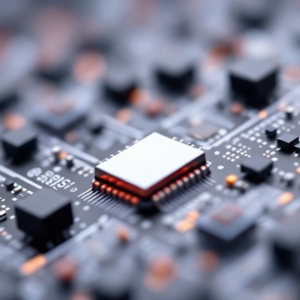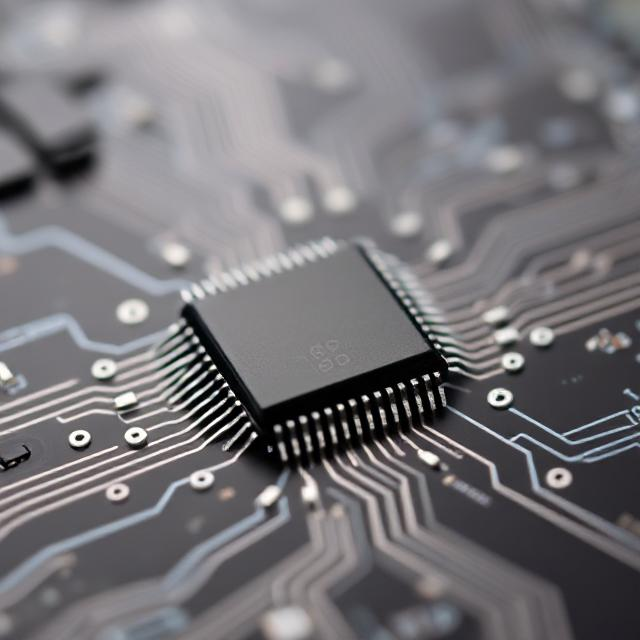Emerging Trends in Circuit Design
Introduction:
Circuit design is evolving rapidly due to advancements in technology, increased demand for higher performance, and the need for more energy-efficient systems. As electronics become smaller, faster, and more powerful, new trends are shaping how circuits are designed. These trends are driven by innovations in materials, fabrication techniques, and design tools, along with the growing need for sustainability in electronics.

1. Miniaturization and Nanoelectronics:
One of the most significant trends in circuit design is the continued miniaturization of electronic components. As devices shrink in size, they can be more densely packed, allowing for better performance in smaller form factors. The use of nanoelectronics is making it possible to develop circuits at the atomic or molecular level, which improves efficiency and speed while reducing the power consumption of devices.
Key Impact:
-
Smaller devices
-
Improved performance per unit area
-
Reduction in energy consumption
Challenges:
-
Heat dissipation becomes more complex.
-
Fabrication techniques need to keep up with smaller dimensions.
2. 3D Integrated Circuits (3D ICs):
Traditional circuit designs are often flat (2D), but 3D ICs stack multiple layers of circuits vertically, allowing for higher integration and greater functionality in less space. This trend helps to overcome the limitations of 2D designs, such as performance bottlenecks and space constraints. By stacking circuits, 3D ICs can reduce interconnect length, which leads to faster communication between components.
Key Impact:
-
Higher integration and better performance
-
Reduced power consumption
-
Compact design for mobile and wearable devices
Challenges:
-
Thermal management issues
-
Complex manufacturing process
3. Flexible and Wearable Electronics:
With the rise of wearable technology, the demand for flexible circuits that can conform to the human body or other dynamic surfaces is growing. Flexible circuits are typically made from organic materials or thin, bendable metals, allowing them to be incorporated into clothing, health monitoring devices, and even prosthetics.
Key Impact:
-
Growth in wearables and health monitoring applications
-
Enhanced user experience and comfort
-
New possibilities for integrating electronics into everyday objects
Challenges:
-
Durability and reliability concerns
-
Design complexity for flexible materials
4. Internet of Things (IoT) Integration:
The proliferation of IoT devices has increased the need for circuit designs that support connectivity and communication. IoT devices often operate with low power and require compact circuits to integrate various sensors, actuators, and communication technologies like Wi-Fi, Bluetooth, and Zigbee. As IoT devices become more widespread, designers are focusing on creating low-power, high-performance circuits that can be easily integrated into a variety of applications.
Key Impact:
-
Increased demand for compact, low-power, and highly integrated circuits
-
Need for wireless communication capabilities
-
Applications range from smart homes to industrial automation
Challenges:
-
Power efficiency is critical due to battery limitations
-
Secure communication protocols need to be integrated
5. Artificial Intelligence (AI) and Machine Learning (ML) in Circuit Design:
AI and ML are revolutionizing the way circuits are designed. By using algorithms to optimize designs, AI can assist in creating more efficient and innovative circuits. Machine learning models can analyze huge datasets to predict the performance of various circuit configurations, helping engineers make better decisions faster. Additionally, AI can help automate repetitive tasks in the design process, reducing human error and accelerating time to market.
Key Impact:
-
Faster and more efficient design processes
-
Better performance predictions and optimizations
-
Potential for smarter and adaptive circuits
Challenges:
-
High computational resources required for training models
-
Limited standardization in using AI in circuit design
6. Quantum Computing Circuits:
Quantum computing represents a major shift in circuit design. Traditional binary circuits are being challenged by quantum bits (qubits), which can exist in multiple states simultaneously. Quantum circuits could potentially solve problems much faster than classical circuits, especially for complex computations such as cryptography or drug discovery. However, quantum circuits are still in the experimental stage and require different materials and technologies.
Key Impact:
-
Potential for solving problems that are impossible for classical computers
-
Groundbreaking advancements in computing power
Challenges:
-
Developing stable qubits
-
Need for advanced materials and fabrication techniques
-
Quantum systems are sensitive to environmental factors
7. Power-Efficient and Sustainable Circuit Design:
As the demand for electronics grows, energy efficiency is becoming a top priority in circuit design. The need for sustainable technology has pushed engineers to focus on low-power circuits that still deliver high performance. Innovations in power management, energy harvesting, and low-voltage operation are driving the creation of greener electronics.
Key Impact:
-
Reduced environmental impact of electronic devices
-
More efficient power usage in mobile and IoT devices
-
Increased focus on renewable energy integration
Challenges:
-
Balancing power efficiency with performance
-
Need for new materials that support low-power operation
Conclusion:
The field of circuit design is undergoing a transformation, driven by advancements in technology and the increasing demand for smaller, more efficient, and smarter devices. Trends like miniaturization, 3D integration, flexible electronics, IoT integration, AI, and quantum computing are all shaping the future of circuits. While these trends offer exciting possibilities, challenges such as power management, thermal control, and design complexity still need to be addressed. As research and technology continue to evolve, the future of circuit design will likely see even more breakthroughs, offering innovative solutions across industries from healthcare to entertainment.











